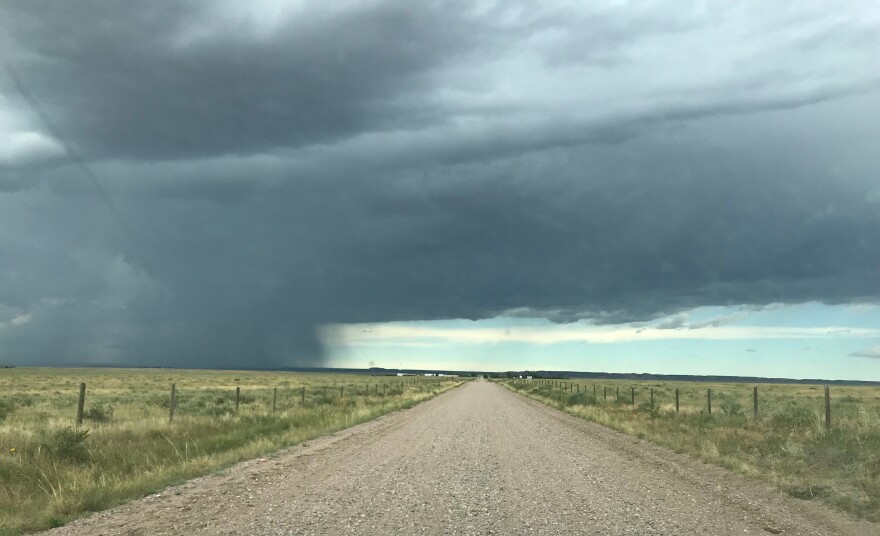It's no secret that climate change is making extreme climate events like droughts and sudden downpours more intense and more common. When two extremes occur at the same time, like a heatwave during a drought or a storm surge at the same time as heavy rain, the combination can make the effects worse. But researchers aren't sure what happens when opposite extremes occur at the same time, like a heavy rain event during a drought.
So to find out, ecohydrologist David Hoover and his team from the USDA's Agricultural Research Service in Fort Collins, Colorado covered three different areas in a shortland prairie in the western Great Plains with clear covers called rainout shelters.
"And what that did is it excluded the natural rainfall because we couldn't predict if it was going to be an average or a wet year," said Hoover. "And then what we did is we added water underneath."

After determining what the most average year for rainfall in that area on record was - 1989 — the scientists replicated the exact pattern and amount of rainfall under one rainout shelter. The other two shelters had induced droughts with about 75 percent less rainfall than the pattern of the average year. One of the drought shelters was then treated with a deluge event - about two and a quarter inches of rainfall at one time — in the middle of the experiment.
"Throughout the whole time we were measuring carbon fluxes, so looking at the exchange of carbon between the air and the soil to the plants, and we also looked at how the plants were greening up," said Hoover. "And then at the end of the season, we measured the biomass — how much the plants grew above and below ground."
According to Hoover, grasslands tend to be carbon sinks, meaning they collect more carbon than they emit, but during droughts, they can reverse and become carbon sources.
"Within about three days of adding the water, we saw brown plants turned back to green. We saw a big pulse and carbon cycling — what we call a hot moment," said Hoover. "So it stimulated all these plant and below ground processes and ended up resulting in a net carbon sink during that period."
But despite these short-term responses, end of season biomass was only up slightly from the drought-stricken plot.

"In terms of big picture results, droughts occur at regional levels," he said. "And so trying to understand how that interacts with deluges, which tend to be on a smaller scale, we can understand some of those dynamics at the local level, and at the regional level, in terms of how plants are going to respond, how local and regional carbon fluxes might respond. And it gives us a lot of insight into how extremes might interact to extremes that we know are going to become more frequent in time."
Hoover said learning more about these interactions will give us a better undertanding of the patterns of carbon sequestration on the plains. He said it will also help producers manage their land.
"Understanding what might happen in terms of forage production, when to expect when things might green up, and how to manage your land, are all important things."
Hoover is now working to learn more about the effects of different levels of deluges on different levels of drought and the long-term impacts of deluges during droughts.







